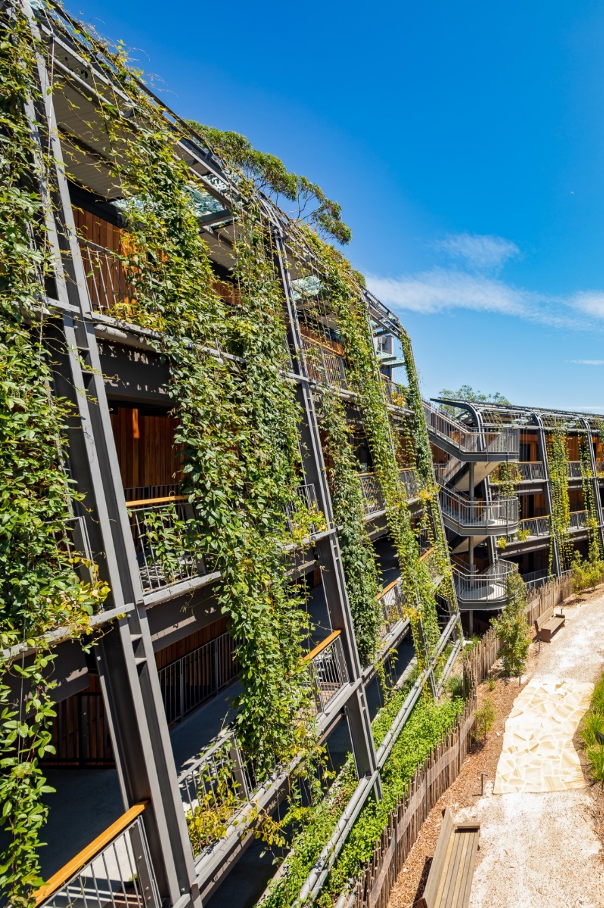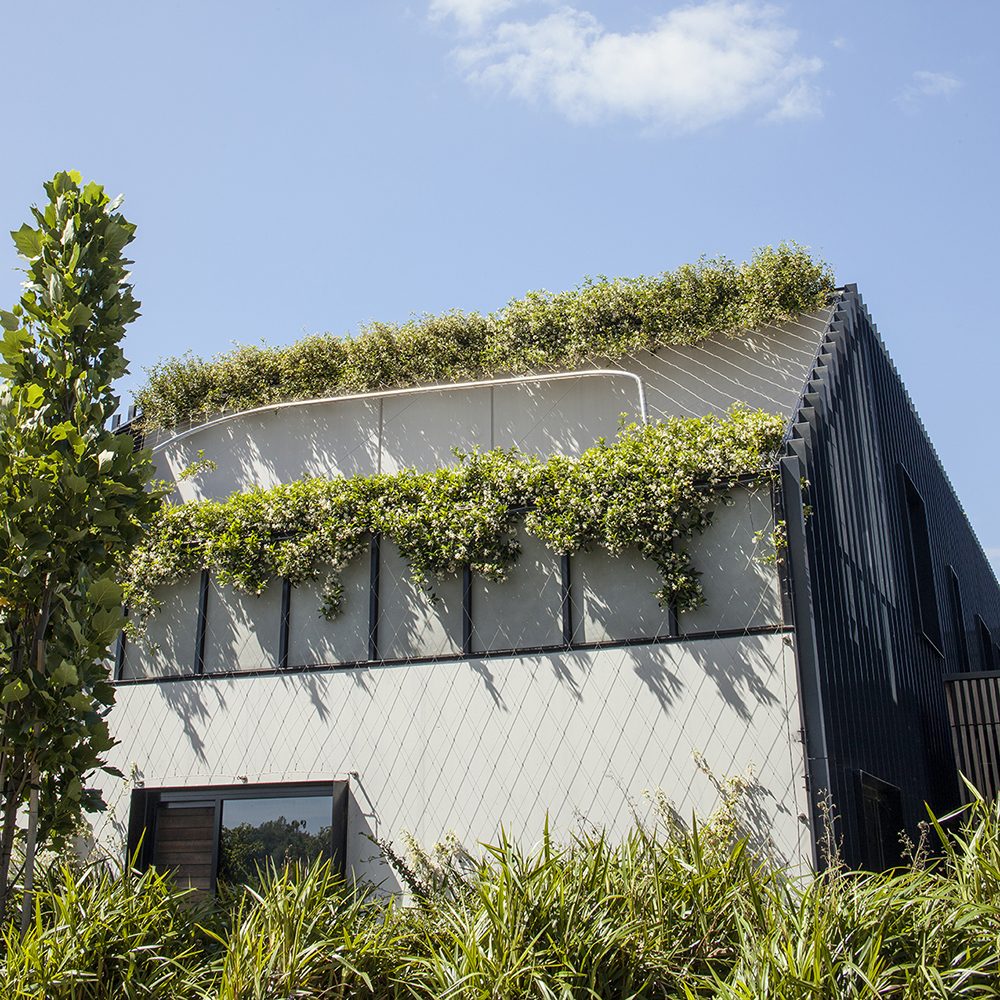Elevated usable spaces will always need strong barriers for fall protection and safety. In that sense, barriers play a very functional role. However, barriers can also be made to look great as part of the architectural design of a structure.
The use of green facades as barriers is one example. These are essentially safety barriers made from wire rope or mesh that also act as support structures or trellises for climbing plants, which are grown either from ground level or using planter boxes.
In this way, a green facade barrier offers the best of both worlds. It provides a strong durable barrier that meets safety regulations, but also has a visual softness and lushness.
Other benefits of these kinds of green screen barriers include a dappled light effect, increased privacy in residential buildings, and a connection point to nature.
Case example: accommodation at Taronga Zoo
Taronga Zoo recently installed several green facades as barriers on its new wildlife retreat accommodation centre, which opened at the zoo in 2019.
Designed by Cox Architecture, the centre consists of a series of accommodation lodges, an entry pavilion and a separate restaurant building. The retreat has been created to provide guests with an interactive experience with Australian native animals.
Positioned around the central wildlife exhibit, each accommodation building has its own series of native plant ‘green screens’. The screens were constructed using 4mm marine-grade stainless steel cables supplied and installed by Tensile. Our team also did some design development for the project, in conjunction with landscape architect Turf Design Studios.
The wire cables – suitable for the harsh coastal environment at the zoo – run from the top to the bottom of the building in a continuous pattern to support planters at each level. Planting at each level in this way helps to hasten green coverage of the wire rope, so the full effect of the lush green facade is achieved sooner.
The green facades serve several purposes. This includes camouflage of the buildings, shading and privacy along the open walkways, and dappled views that impart a softness to the harder built forms. At the same time, the stunning views of Sydney Harbour are preserved for guests to enjoy.

The benefits of wire in green facade barriers
Low-maintenance wire cables provide a very efficient way of creating green facade barriers of this kind. Benefits include longevity, fast installation and no need for a secondary support structure. The result is a simplicity of design that makes a powerful statement at the same time.
Another great thing about this installation is that the as plants grow, the cables will simply disappear from view. Once this stage is reached, we consider our job is complete – making this a very satisfying project indeed!
Versatility of green facades as barriers
Green facades as barriers are also ideal for apartment balconies and car parks.
At the Anderson Road Melbourne apartment complex for example, Webnet mesh wraps the three-storey structure and is used to support climbing plant growth. This approach provides a range of benefits to the residents, such as shading, cooling, dappled light and increased privacy.
Green facades can help camouflage and soften car park structures and create visual appeal – a good example being the Sydney Super Yacht Centre.
If your project could benefit from the use of green facades as barriers, feel free to get in touch with our design team for a discussion.







































